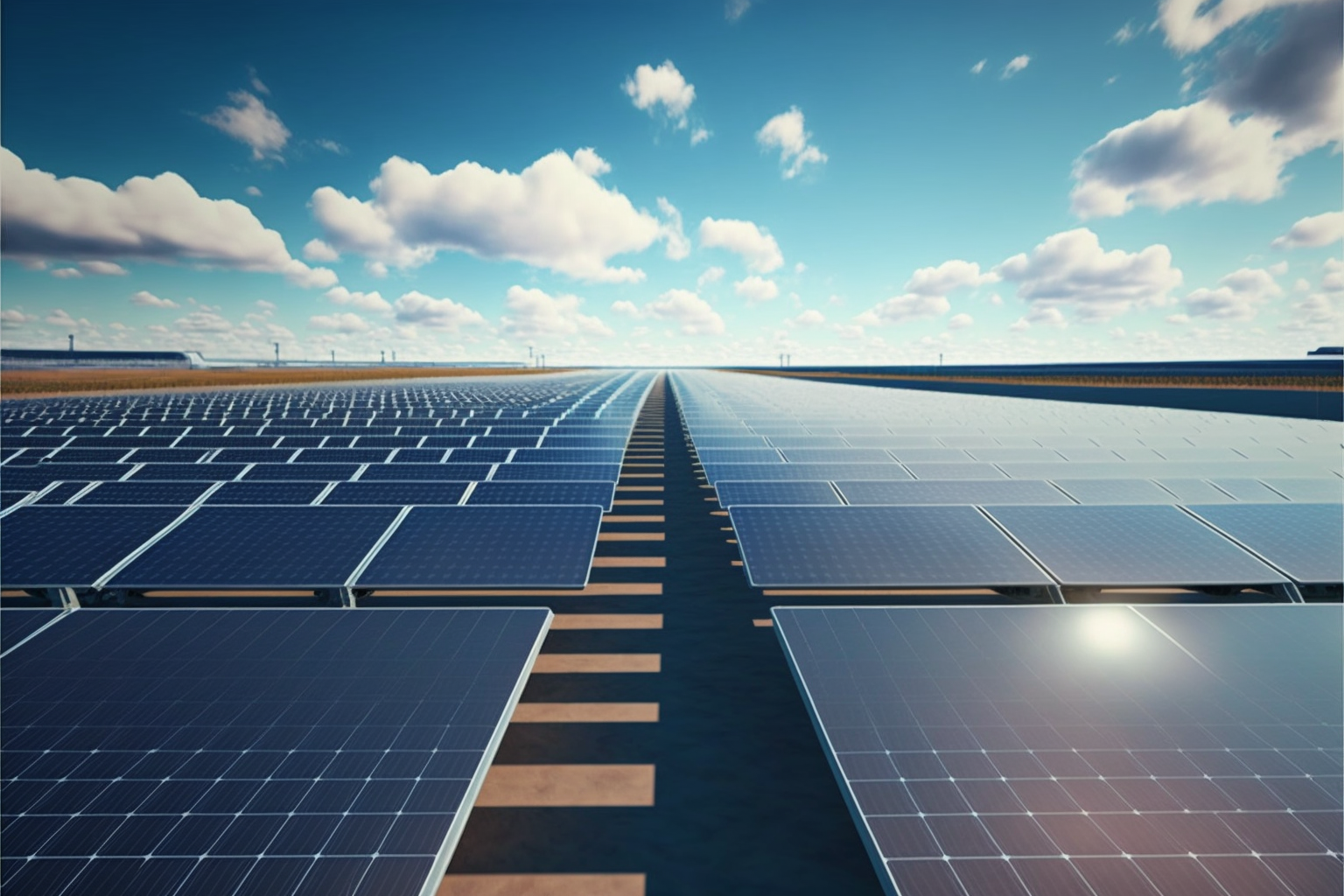What is PV oversizing?
PV oversizing is a design principle whereby the installed PV peak power is deliberately not fully utilized. This allows reasonable yields to be achieved in low-yield periods.

PV oversizing refers to the practice of installing a photovoltaic system with a capacity greater than the household's actual energy needs. The oversizing here occurs on several levels.
Oversizing at device level
Assuming a not quite ideal - let's say a garage roof with 5° inclination to the east - roof surface is covered with PV modules, then one must assume that in principle this does not deliver the theoretically possible peak yield.

Now we know that PV modules are the economically relevant component of a system (cheap and it is the modules that provide energy), so we use the entire roof area and install, for example, 9.1kWp of PV power. Now the inverters are already more expensive and it makes no economic sense to install a 9kW inverter for maybe 5% of the annual sunshine hours in which this peak power is actually achieved.
The installed inverter then can only have 6kW. If the PV modules deliver more than those 6kW, energy remains, but since these 6kW are about 33% below the theoretical maximum power of the modules, the inverter will now work over a much longer - and also sunless - time of the year with nominal power.
The manufacturers of inverters and solar charge controllers even specify the so-called "maximum generator power" that can be connected to devices of a certain power class and this is sometimes 50% higher than the nominal power of the devices.
Oversizing at the investment level
More power than "the household's actual energy needs." This so-called actual household energy demand is an enormous fallacy, and so fundamental that we need to discuss it in detail here.
If you don't have your own power plant yet, think about your household's energy needs and how they come about: you have some consumers and a certain lifestyle. You pay a certain price for each kWh to your energy supplier and your lifestyle has adapted to this context over time. How much will the electricity bill be this year? Where can I save? What do I want to treat myself to, what consumption can I (no longer) change?
This may then be the current "actual energy demand" of your household, but only in this context! If the kilowatt hour of electricity would cost your household only 8 cents and not 40 cents (nota bene green electricity)... wouldn't your "actual energy demand" be different?
In other words, before sizing a system, you should of course know your own consumption. But this is only to determine the basic requirements - the so-called baseline. After all, you don't want to be worse off with your own power plant than before. The inverters must meet minimum requirements of your peak consumption, etc.
Only then, as soon as you know this baseline, is the power plant sensibly dimensioned in order to be able to fulfill the basic requirements in the winter time as well. If possible, done so with regard to the actual possibilities of the installation (PV areas, budget, etc.) and also with regard to future plans.
In the end, this means that if your household had an "actual energy demand" of 6MWh/year, for example, the power plant customized for you will now supply just 30MWh/year. Suddenly you have 24MWh (spring - fall) of new "actual energy surplus" that you certainly don't want to leave lying around.
It is exactly this surplus that becomes the new norm for you. You can plan things with it, which would have never been considered before, because 24 MWh would cost you 9600 €/year - now you have them for "free". Ok, purely financially these 24 MWh cost you about 1920 €/year if you include the amortization of the plant, but it is not a sum that is debited as "operating costs" from your account. You had invested once in the plant and that was it.
If this consideration does not seem conclusive to you and you prefer to invest in a 6kWp (= 6MWh annual yield) plant - because this is after all your "actual need", this is of course your decision, but PetaJoule is then not the right contact for such a plant.
The transformation from a 6MWh to a ~20+MWh household will also not happen abruptly after installation, but will take 1-2 years, because - see above - quote:
Your lifestyle has adapted to this context over time
Conclusion
We keep in mind: Oversizing makes it possible to design a plant in such a way that it also supplies enough energy in winter. With the climatic conditions in Europe, you will have a surplus from spring to fall with such a plant, but feeding this surplus into the grid is an economic mistake - you yourself can use the electricity much more sensibly. Even "letting it lie" (by throttling the plant) makes more sense.

